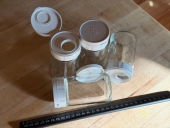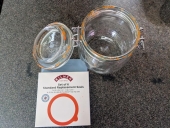

John C Daley wrote:...Even collecting water has a cost, tanks, pipes, valves etc.
I think I have never heard the comment 'water is expensive ' ever, so some more details will help.
...

r ranson wrote:
This one sounds like air can help. They sell something innthe shops here that looks like a can of compressed air and a plunger had a baby. Put the plunger end on top of the drain and press down really well. It shoots air into the drain and bingo, no more clog. Good for ones just past the bend.
I wonder if there is a more affordable version one can make at home. It sounds like it would do the job but without taking the pipe apart or risk getting bad air in the lungs with a hose.
William Bronson wrote: I used to be service plumber, and learned the hard way that a 5 min 150$ toilet unclog did not make the customer happy, but closing the door, unclogging the toilet and then spending 15 minutes making noise did make the customer happy.
A little murmured cursing didn't hurt either.


Ben Brownell wrote:I think the "pipeline" factor is important for keeping the process running smoothly at scale. By that I mean, having biochar production as one important step in a sensible operation/maintenance regime for your site. Making the stuff as an end goal in itself is marginal or unsustainable, but if it fits well in a sequence of other productive, function-stacking tasks, then it really is easy to establish a system and routine and make and use a lot of the stuff. For me, the pipeline is brush clearing / fuel reduction on a large neglected and overgrown property which leads to lots of light weight soil improving fill material and amendment I can incorporate in a variety of more fine tuned landscaping and nutrient cycling endeavors. It helps that my feed stock requires no pre-processing and burns quickly to a nice output in open pits, but it's an adaptable process and not hard to streamline when you have the incentive of an essential workflow serving several purposes consistently.
John Suavecito wrote:I've had the fire department sicced on me a couple of times. I burn in the cement driveway with a chimney. They were annoyed that someone called, because they considered it a waste of time. No danger whatsoever. People can have barbecues. This is a suburban area. I guess it depends on where you live.
John S
PDX OR